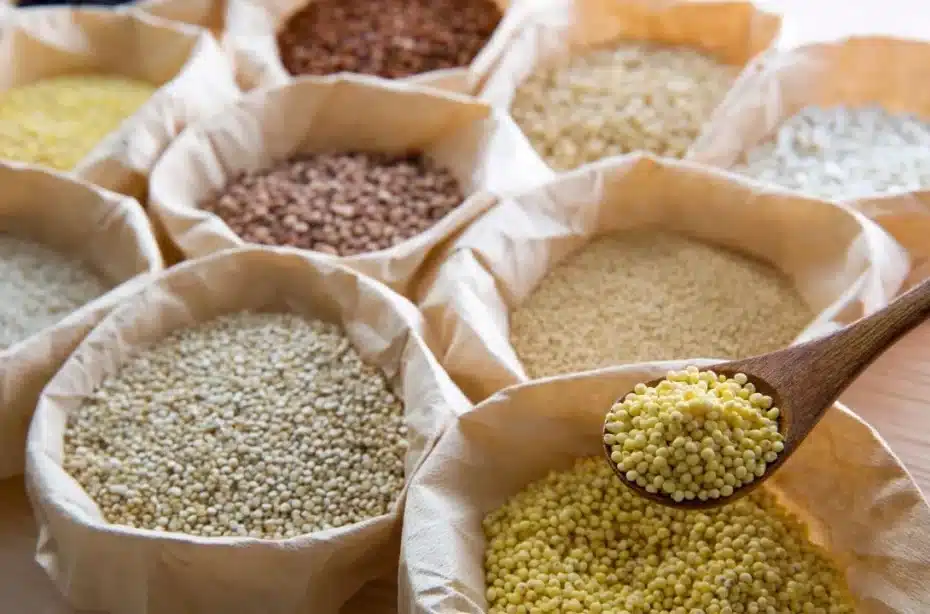Introduction
In recent years, millets have gained widespread attention as a nutritious and sustainable food source, particularly in the context of a growing India. These ancient grains, often overlooked in favor of more popular cereals like rice and wheat, offer a plethora of health benefits that make them an ideal addition to the Indian diet. As India’s population continues to grow, the promotion of millet consumption could play a pivotal role in addressing nutritional deficiencies and promoting overall health. This blog explores the nutritional benefits of millets and their significance in the context of a rapidly expanding India.
A Brief Overview of Millets
Millets are a diverse group of small-seeded grasses that have been cultivated for thousands of years. They include varieties like finger millet (ragi), pearl millet (bajra), foxtail millet, sorghum (jowar), and many more. Millets are hardy crops that require minimal water and can thrive in harsh environmental conditions, making them well-suited for India’s diverse agro-climatic zones. Their resilience contributes to sustainable agriculture and supports local farmers’ livelihoods.
The Nutritional Powerhouse
Millets are nutritional powerhouses, offering a range of essential nutrients that can address the nutritional challenges faced by many Indians. Here are some of the key nutrients found in millets:
- Fiber: Millets are rich in dietary fiber, which supports digestive health, prevents constipation, and helps regulate blood sugar levels. The high fiber content also contributes to a feeling of fullness, aiding in weight management.
- Protein: Millets are a good source of plant-based protein, making them an excellent option for vegetarians and vegans. The protein in millets is of high quality and contains a good balance of amino acids.
- Micronutrients: Millets are packed with essential vitamins and minerals such as iron, magnesium, phosphorus, and B vitamins. These nutrients are crucial for various bodily functions, including energy production, bone health, and immune system support.
- Antioxidants: Certain millets, such as finger millet (ragi), are rich in antioxidants like polyphenols. These antioxidants help protect cells from oxidative stress and reduce the risk of chronic diseases.
Health Benefits of Millets
The consumption of millets is associated with a wide range of health benefits, particularly in the context of the Indian population:
- Diabetes Management: Millets have a low glycemic index, meaning they cause a slower rise in blood sugar levels compared to refined grains. This property is beneficial for individuals with diabetes in managing their blood sugar levels.
- Heart Health: The high fiber content in millets, along with their low levels of saturated fats, can contribute to improved heart health by lowering cholesterol levels and reducing the risk of cardiovascular diseases.
- Weight Management: The combination of fiber and protein in millets can help individuals feel full for longer periods, reducing overall calorie consumption and aiding in weight management.
- Bone Health: Millets are rich in minerals like calcium, phosphorus, and magnesium, which are essential for maintaining strong and healthy bones.
Cultivating a Millet Culture
Promoting the consumption of millets is essential for harnessing their nutritional benefits and creating a healthier and more sustainable food culture in India. By raising awareness, encouraging culinary innovation, and garnering government support, we can foster a millet culture that benefits individuals and the nation as a whole.
- Raising Awareness:Spreading knowledge about the nutritional advantages of millets through educational campaigns, cooking demonstrations, and community initiatives is on a rise. People are learning about the high fiber, protein, and essential nutrient content of millets. This understanding empowers individuals to make informed dietary choices that can lead to better health outcomes.
- Encouraging Culinary Innovation:Chefs, home cooks, and food bloggers are actively developing new recipes that incorporate millets into familiar dishes and focusing on creative culinary approaches that make millets more appealing and accessible. Traditional recipes are being adapted to include millets, making it easier for people to embrace these grains in their daily meals.
- Garnering Government Support:Our government recognizes the potential of millets to address nutritional challenges and promote sustainable agriculture. Policies are being enacted to incentivize millet cultivation and incorporate millets into government-sponsored food programs. This support is vital in ensuring that millets become an integral part of the national food landscape.
Conclusion
In a rapidly growing India, ensuring access to nutritious food for all is a pressing concern. Millets offer a sustainable and nutrient-rich solution to this challenge. By embracing these ancient grains and incorporating them into our diets, we can improve public health outcomes, promote sustainable agriculture, and create a healthier, more prosperous future for India. As individuals, communities, and governments work together to cultivate a millet culture, we pave the way for a nourished and thriving nation.

